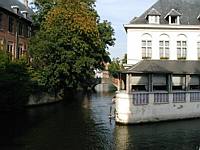
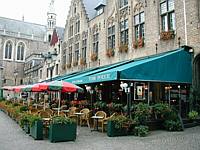
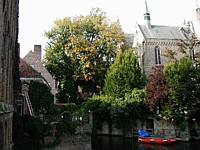
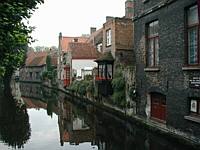
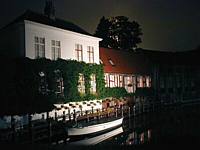
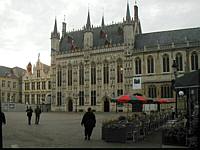
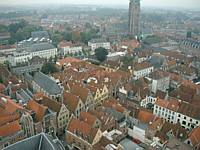
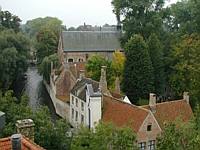
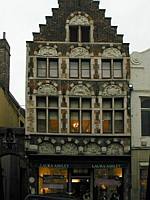
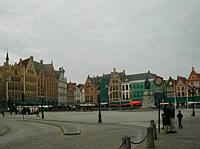
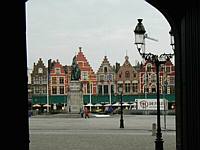
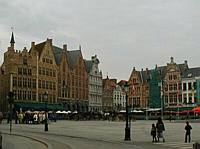
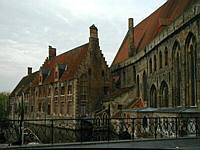
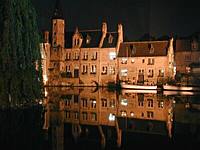
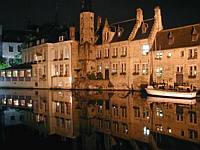
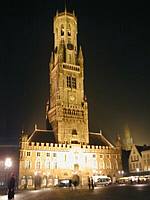
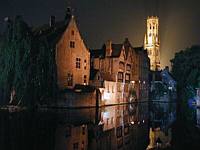
As early as the first century AD, Brugge was a flourishing maritime trading center. Originally, the trade was primarily with Scandinavia. This was important as it saved Brugge from the ravishes of the Vikings--unlike the rest of Europe. The city continued to prosper and the circle of trade became world wide through the 15th century.
This was the peak, however, and political uncertainty, a silted port, and Napoleon's army caused this once rich and powerful city to be identified as the poorest city of Belgium in ~1850.
Today, Brugge has come alive again as a tourist and culture center of the north, taking advantage of their history, unique 17th and 18th century architecture, and romantic canal-crossed city center. What was once a trading center has now become the romantic getaway for couples from around the world--including us.
There was a period in the fall of 2001 when it looked like we would be returning to the US within weeks. It was then that we realized that we had not yet made the time to get away for a few days by ourselves and see this city. With the help of some friends who watched the kids for the weekend, Lori and I (with Perri) took off and spent a weekend walking and exploring.
We were not disappointed. Though it rained every day (as it always seems to do when we go to the northern coast of Europe) the city, the people, the quiet, and the calm were relaxingly wonderful. We particularly enjoyed just walking along and exploring the city. In the evenings, the reflection-filled canals were wonderful.
The architectural beauty is not limited to the exterior facades. The church, in particular, is justly famous for the interior directions. In particular, they have one of the few Michelangelo sculptures outside of Italy. An example of the wealth and power this city once carried.
While sitting on the city square, enjoying a warm snack and a cold Belgian beer, we were surprised by the sound of the city bells. They were musical. Literally. Complex musical melodies came from the tower and filled the air.
We were even more surprised when we climbed the tower to see how these sounds were being made. The tower was a full sized music box from the 1740's. Mechanical music boxes use a spiked drum play tuned springs. This bell tower was similar. A four foot diameter drum with movable spikes rotates and actuates the levers that then play the bells. A music box several stories in height and with perfect pitch.
Brugge was a wonderful weekend and visit worth repeating.